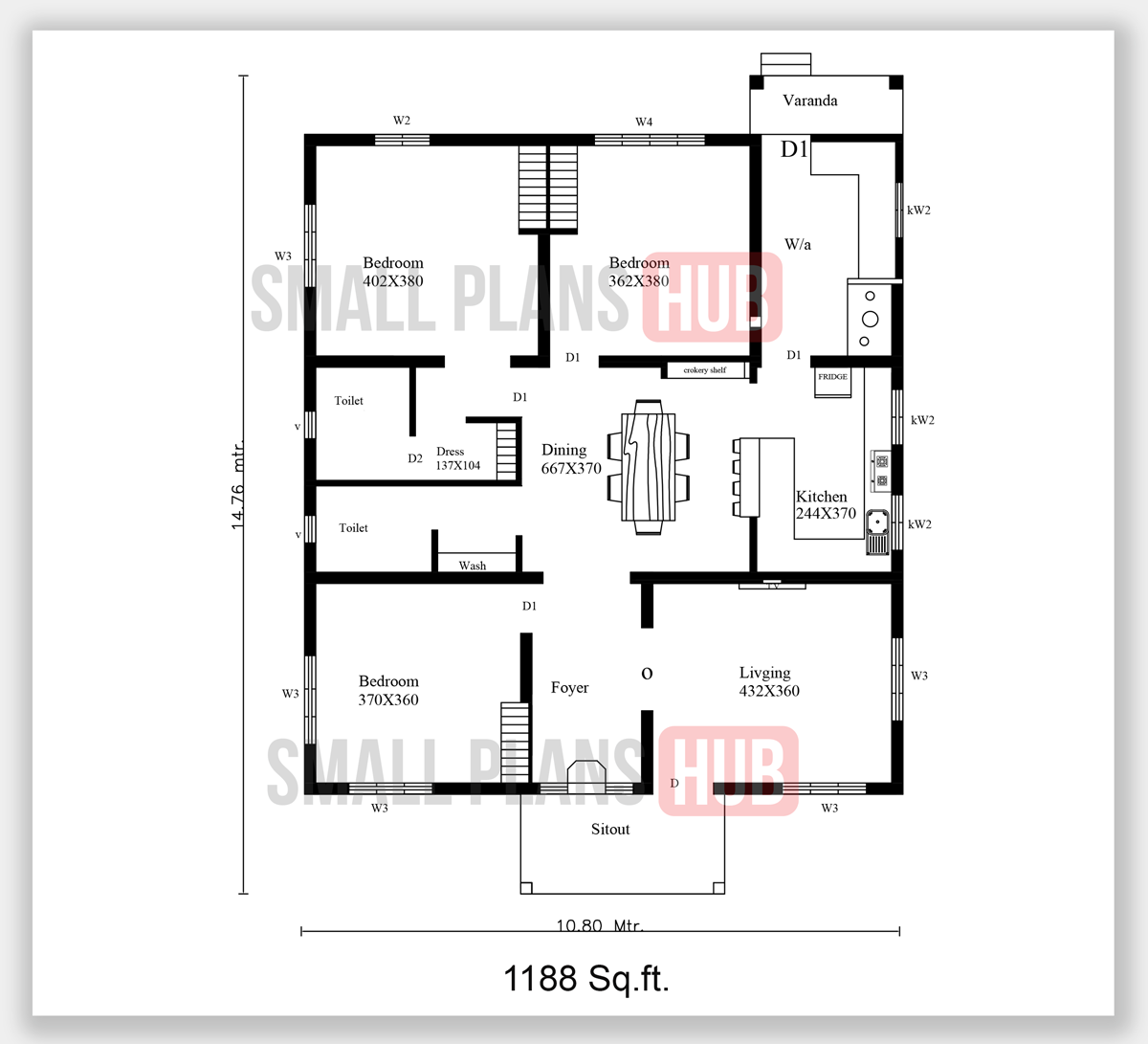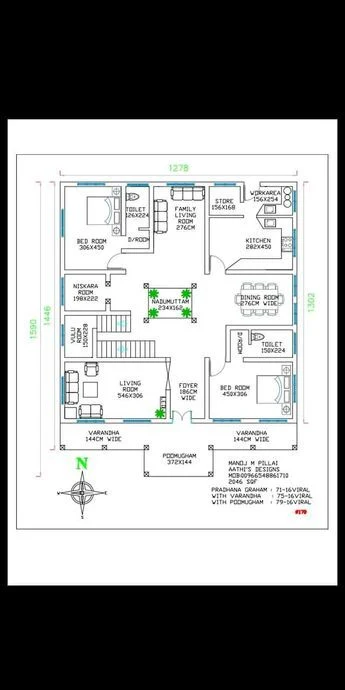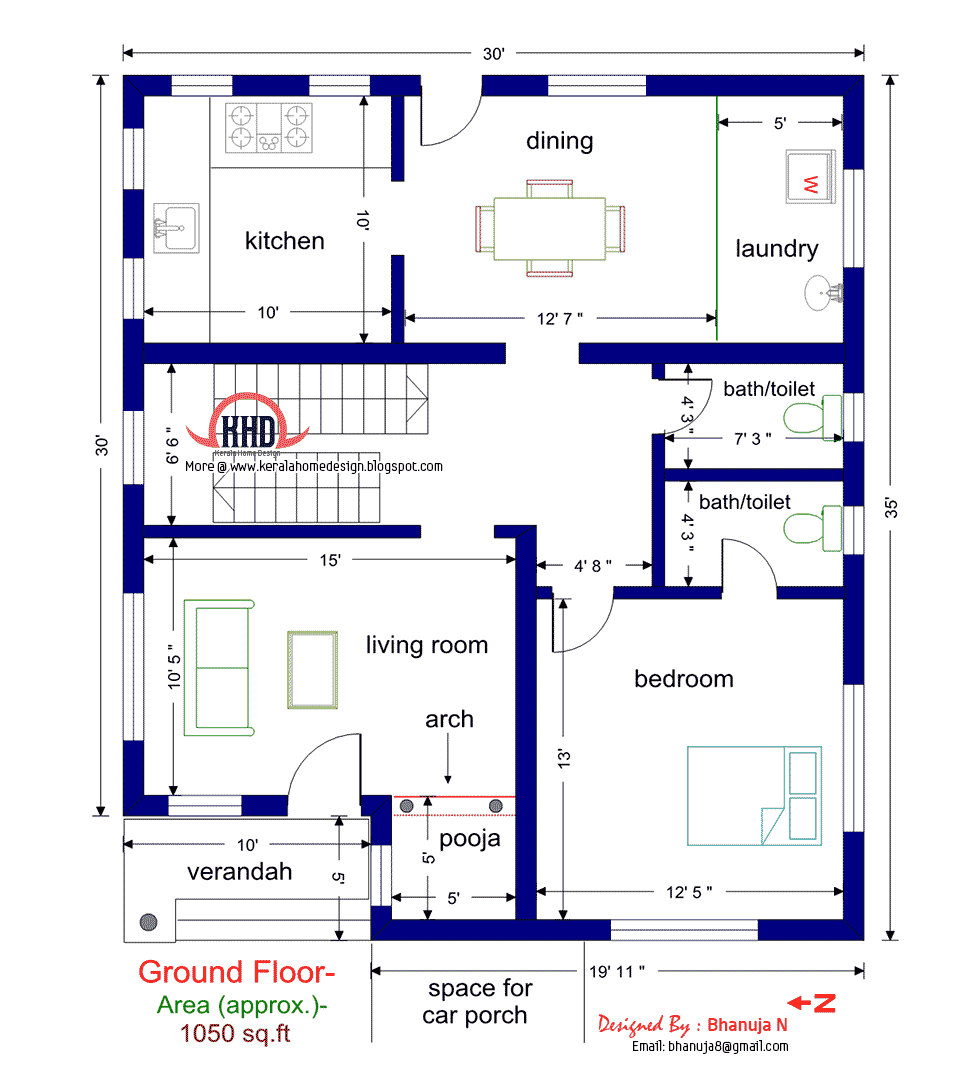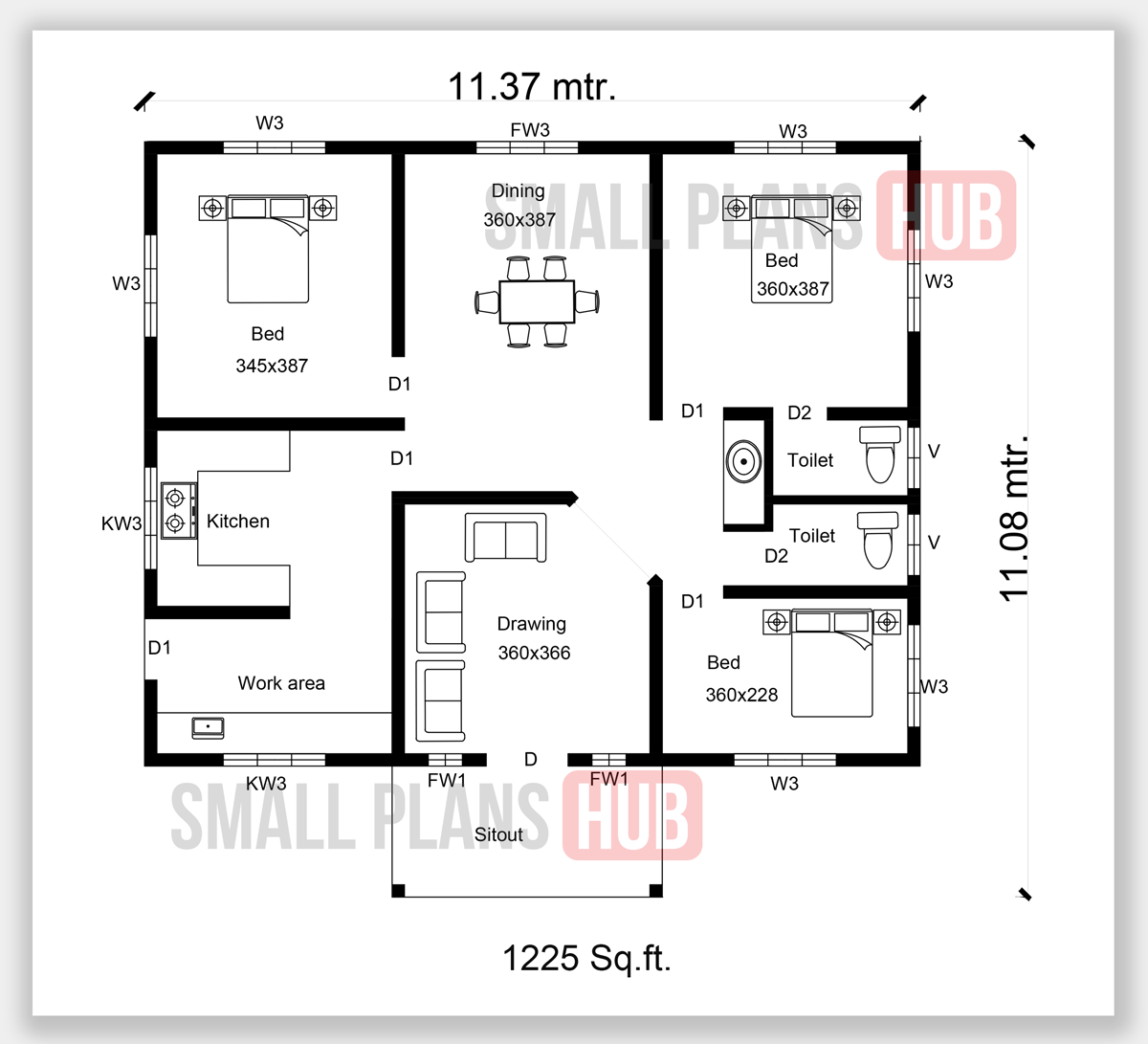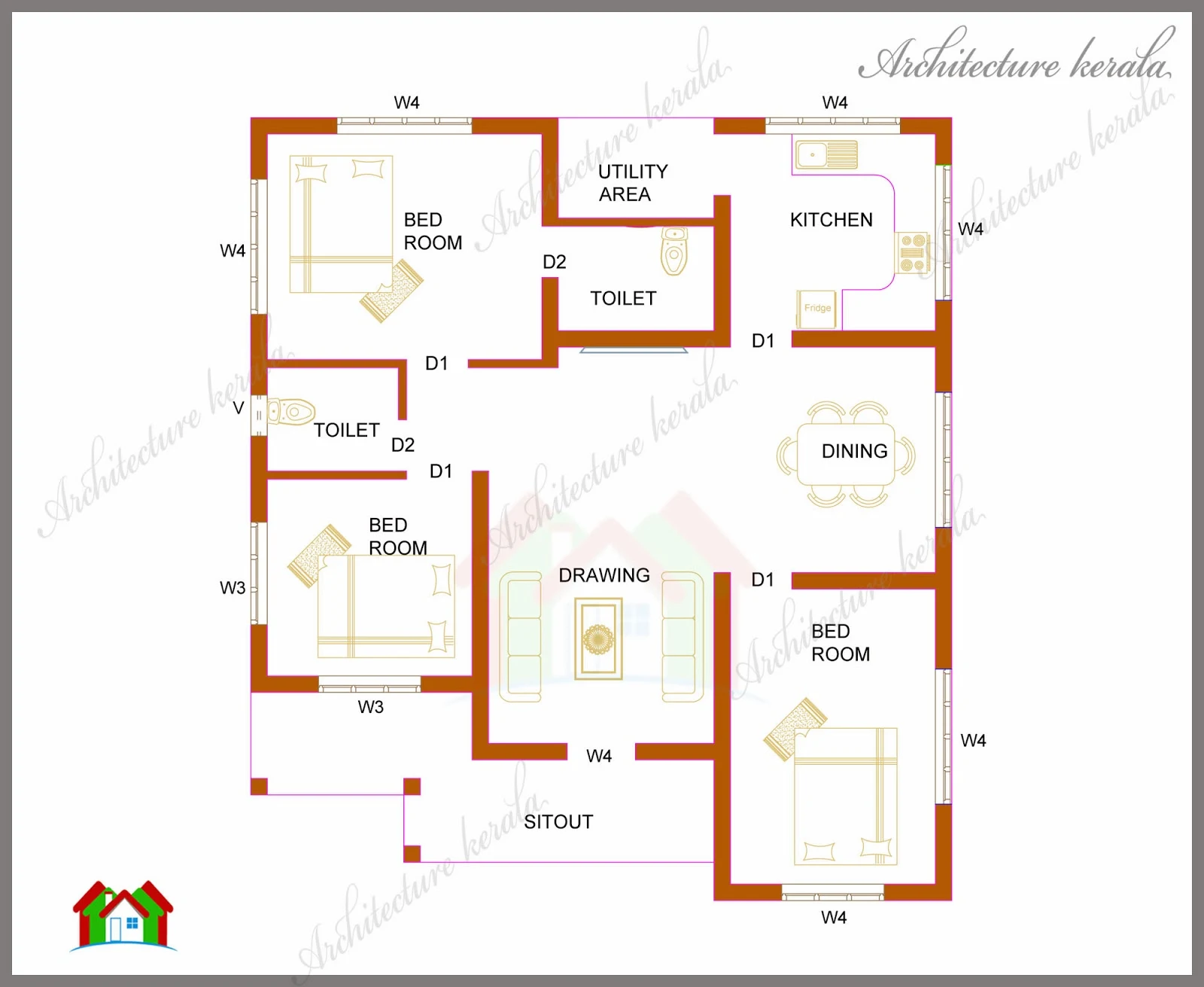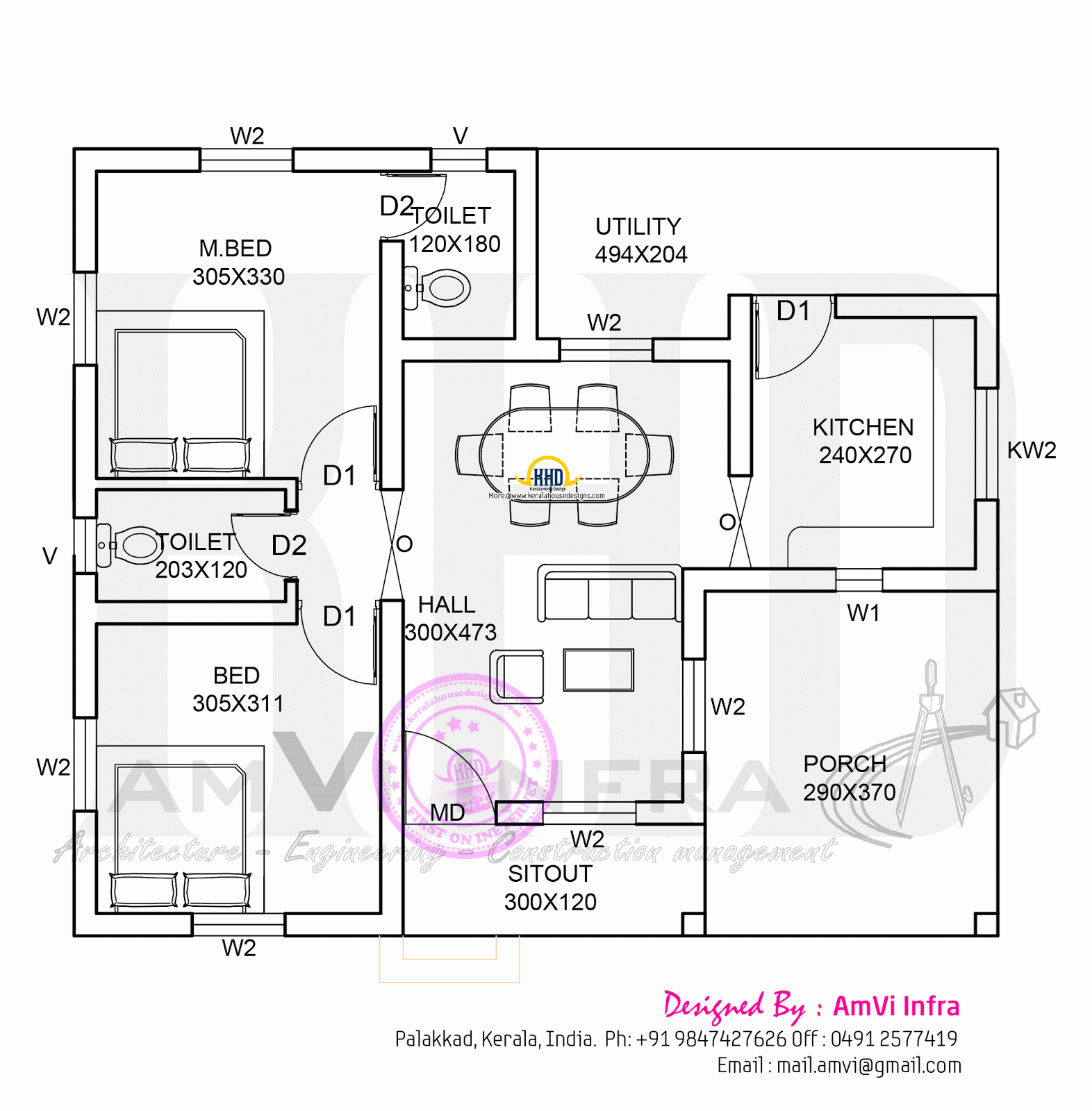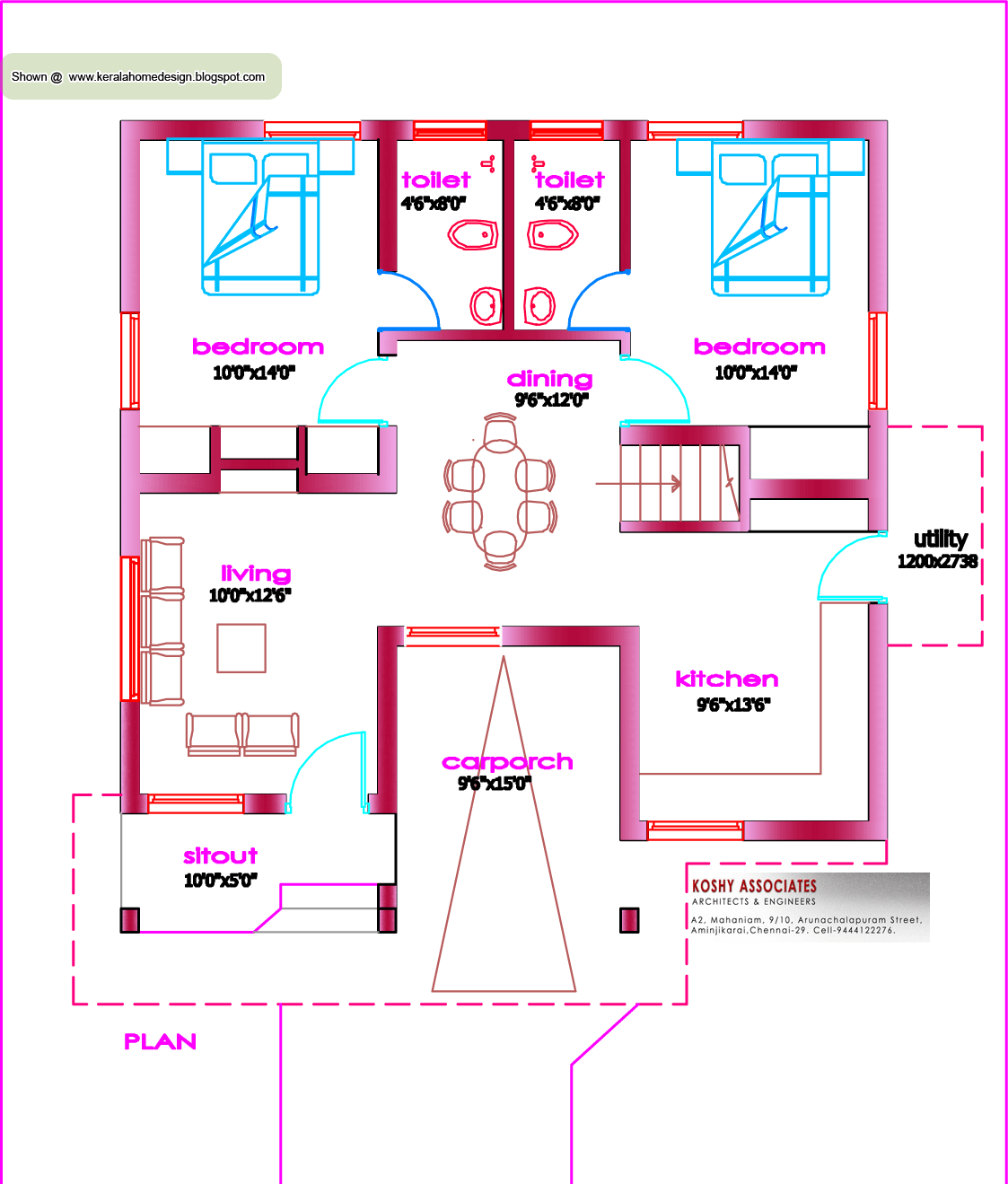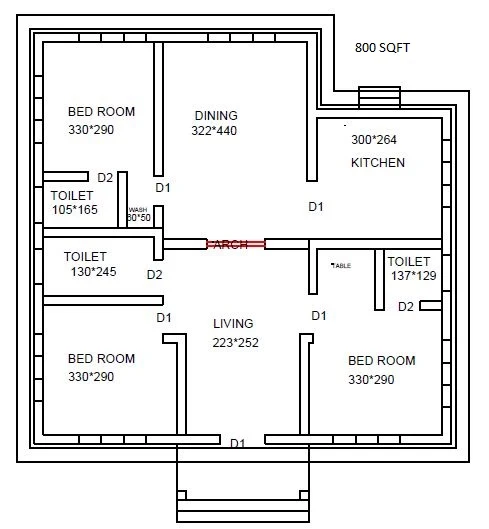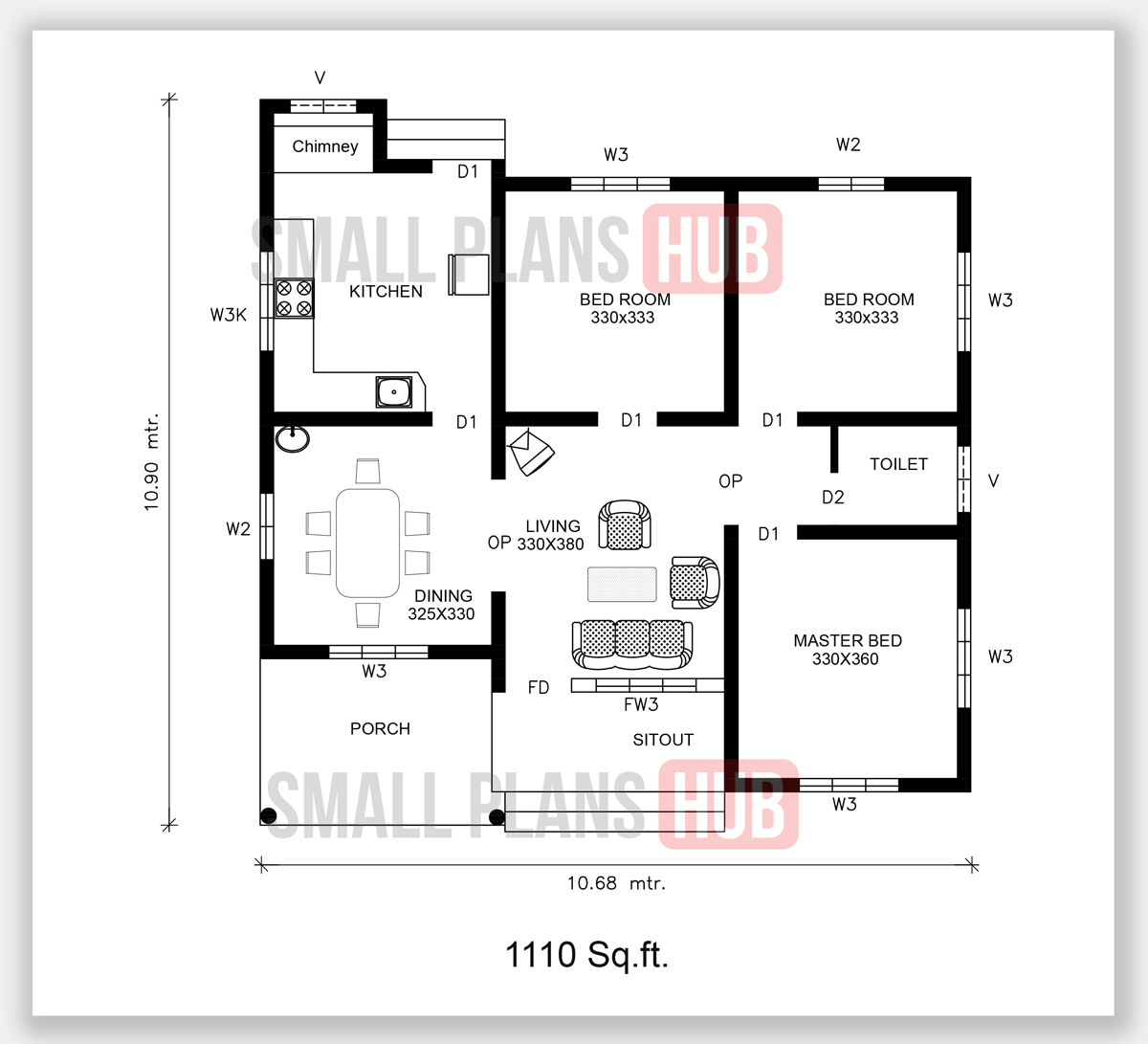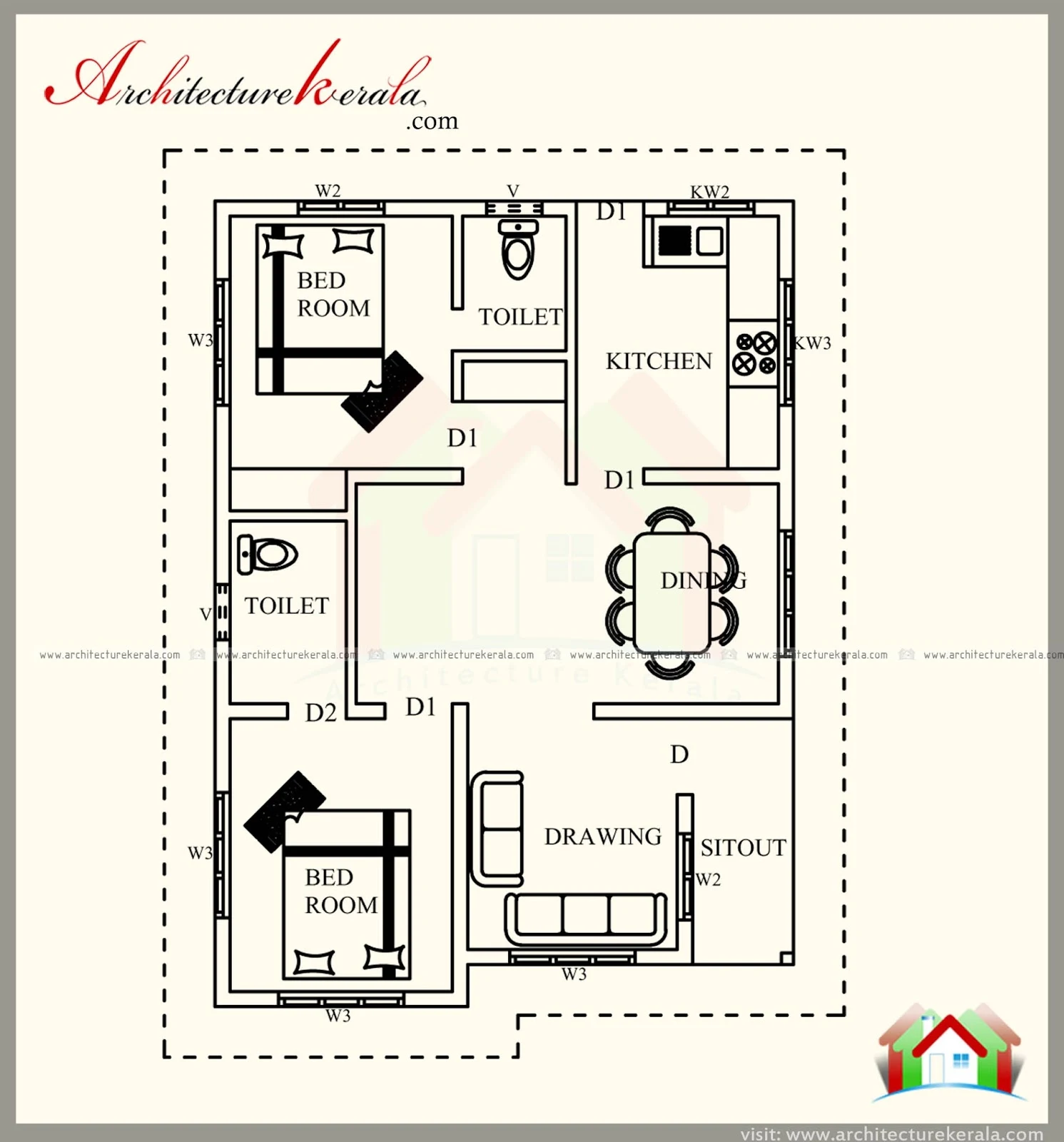3 Bedroom Floor Plan Options: Exploring Layout Possibilities within 1000 sq ft
By Abu Rizal at: February 16, 2021
As the cost of living continues to rise, many people are turning to smaller, more efficient home plans as a way to save money and simplify their lives.
Smaller homes are not only more affordable, but they also require less maintenance and are more energy efficient.
Additionally, the simplicity and minimalism of small home living can be a refreshing change from the chaos and clutter of larger homes.
The focus of this article is on 1000 sq ft house plans with 3 bedrooms. These plans offer the perfect balance of space and functionality for small families or individuals looking for a starter home.
With just the right amount of square footage, these plans provide enough room for comfortable living without feeling cramped or cluttered.
In this article, we will explore the benefits of smaller home plans, design options for a 1000 sq ft footprint, and different layout options for a 3 bedroom home within this square footage.
The Benefits of Smaller Home Plans
One of the main benefits of smaller home plans is the cost savings associated with them.Smaller homes require less materials to build and have lower energy costs, resulting in significant savings on both the purchase price and the ongoing expenses of owning a home.
Additionally, smaller homes typically have smaller mortgages and property taxes, which can also help to save money in the long run.
Smaller homes are also more energy efficient than larger homes. They require less energy to heat and cool, which can result in significant savings on utility bills.
Additionally, smaller homes often have fewer windows, which can help to reduce heat loss in the winter and heat gain in the summer.
These factors combined can make a big difference in the amount of energy needed to keep a small home comfortable, which can make a huge impact on the environment and the wallet.
Another benefit of small home living is the simplicity and minimalism it encourages.
Smaller homes require less furniture and decor, which can be a refreshing change from the clutter and excess that often comes with larger homes.
It also encourages to be more mindful of the possessions, which can lead to a more intentional and satisfying lifestyle.
Simplifying one's home can also free up time and energy for other pursuits and activities.
Additionally, the minimalism that comes with small home living can be a great way to declutter your mind, resulting in a more peaceful and stress-free living environment.
Designing a 1000 sq ft Floor Plan
Designing a floor plan for a 1000 sq ft home can be challenging, as it requires careful consideration of the limitations and opportunities of such a small footprint.The key to success is to make the most efficient use of the space available.
One of the main limitations of a 1000 sq ft floor plan is the lack of space for separate rooms.
To maximize the functionality of the space, it is important to consider open-plan layouts that combine living, dining, and kitchen areas into one large room.
This not only makes the space feel larger, but it also allows for better flow and more opportunities for natural light and ventilation.
Another important aspect to consider when designing a 1000 sq ft floor plan is the use of built-in storage solutions.
This can include things like built-in shelves, under-stair storage, and even furniture that doubles as storage. This will help to maximize the space available and reduce clutter.
The importance of natural light and ventilation in small home plans cannot be overstated.
These are critical elements that help to make the space feel larger and more comfortable.
Large windows, skylights, and sliding doors can be used to bring in natural light and provide a connection to the outdoors.
Additionally, cross-ventilation can help to keep the air fresh and healthy inside the home.
In summary, designing a 1000 sq ft floor plan requires a creative and strategic approach to make the most of the limited space.
By understanding the limitations and opportunities of a small footprint, exploring layout options for efficient use of space,
and incorporating natural light and ventilation, it is possible to create a comfortable, functional, and efficient home.
3 Bedroom Floor Plan Options
When designing a 3 bedroom home within 1000 sq ft, there are several layout options to consider.Each layout has its own set of pros and cons, and it's important to choose the one that best suits your needs and lifestyle.
One popular layout option is the traditional 3-bedroom, 2-bathroom floor plan.
This layout typically includes a master bedroom with en-suite bathroom, two additional bedrooms, and a shared bathroom.
This layout is ideal for small families or individuals who value privacy and a separation of living spaces.
The main disadvantage of this layout is that it often sacrifices space in the common areas, such as the living room and kitchen, in order to accommodate the bedrooms.
Another layout option is the open-plan 3-bedroom floor plan.
This layout combines the living, dining, and kitchen areas into one large open space, while still providing 3 bedrooms and 2 bathrooms.
This layout is ideal for those who value an open and connected living space, and it can make the home feel larger and more spacious.
However, the lack of separation between the different areas can make it difficult to create a sense of privacy.
A third option is a split-level 3-bedroom floor plan.
This layout typically includes a master bedroom and en-suite bathroom on the upper level, with two additional bedrooms and a shared bathroom on the lower level.
This layout is ideal for those who want to separate the sleeping areas from the living areas, and can provide a sense of privacy and separation.
However, it can also create circulation challenges and it's not suitable for everyone.
Regardless of which layout you choose, all of these options provide a functional and efficient use of space within a 1000 sq ft footprint.
It's important to carefully consider the pros and cons of each layout and to prioritize the features that are most important to you.
Maximizing Storage in a Small Home
Storage is a crucial aspect of small home living, as it can help to reduce clutter and make the space feel larger and more organized.Built-in storage solutions, such as shelves, cabinets, and closets, are particularly useful in small homes because they take up less floor space than freestanding furniture.
One of the most effective ways to maximize storage in a small home is by incorporating built-in shelving and cabinetry.
This can be done in a variety of ways, such as by adding shelves above the bed, or by installing cabinetry above the refrigerator or washing machine.
Built-in storage solutions can also be incorporated into the design of the home, such as by including a built-in bench with storage in the entryway, or a bookshelf that doubles as a room divider.
Another way to maximize storage in a small home is by using furniture that doubles as storage.
For example, a bed with built-in drawers or a coffee table with a lift-top surface can provide additional storage space.
Additionally, you can use space-saving furniture such as a Murphy bed, which can be folded away when not in use, or a sofa bed that can be used as a guest bed when needed.
When choosing furniture that doubles as storage, it's important to consider the specific needs of your home.
Think about the items you need to store and choose furniture that can accommodate those items.
For example, if you need to store bedding and linens, a bed with built-in drawers or an ottoman with a storage compartment would be a good choice. If you need to store books and magazines, a bookshelf or a coffee table with a lift-top surface would be a good option.
In addition to built-in storage solutions and choosing furniture that doubles as storage, it is also important to be mindful of the items you choose to keep in your home.
Consider getting rid of items that you no longer need or use, and be intentional about the items you choose to bring into your home.
This can help to reduce clutter and make the space feel more organized and comfortable.
In summary, maximizing storage in a small home is crucial to maintaining a sense of organization and comfort.
Built-in storage solutions and furniture that doubles as storage, as well as being mindful of the items you keep in your home, are effective ways to create more storage space and reduce clutter.
Carefully considering the specific needs of your home and choosing furniture that is functional and efficient is an important step in maximizing storage in a small home.
Incorporating Outdoor Space
Incorporating outdoor space into a small home can be a great way to create a sense of connection to nature and enhance the overall livability of the home.One way to do this is by designing the home to maximize outdoor living.
This can be achieved by including large windows or sliding glass doors that provide a connection to the outdoors and allow natural light to flood into the home.
Additionally, incorporating a small patio or balcony can provide an additional living space that can be used for dining, relaxing, or gardening.
Another way to incorporate outdoor space into a small home is by designing the indoor and outdoor spaces to flow seamlessly together.
This can be achieved by using similar materials and colors both inside and outside, or by designing the outdoor space to mirror the layout of the indoor space.
This can help to create a sense of continuity and make the home feel larger and more connected to the outdoors.
Having a small outdoor space can also have many benefits. For example, a small patio or balcony can provide a private outdoor space where you can relax and enjoy the fresh air.
Additionally, a small outdoor space can be used for gardening, which can provide a source of fresh produce and a sense of connection to nature.
Furthermore, a small outdoor space can be used as an extension of the living space, allowing for outdoor entertaining and gatherings.
In summary, incorporating outdoor space into a small home can enhance the overall livability of the home and provide a sense of connection to nature.
Designing the home to maximize outdoor living, integrating indoor and outdoor spaces,
and highlighting the benefits of having a small outdoor space are all effective ways to incorporate outdoor space into a small home.
Choosing Materials and Finishes
Choosing the right materials and finishes for a small home is essential for creating a comfortable, functional, and beautiful space.When selecting materials and finishes, it is important to consider both durability and maintenance requirements.
For small homes, it's crucial to choose materials that are durable and low-maintenance.
This includes things like hardwood floors, tile, and laminate flooring, which can withstand heavy traffic and are easy to clean.
Additionally, choosing low-maintenance materials for countertops, such as granite or quartz, can save time and money on upkeep.
Finishes such as paint or coatings that are easy to clean or maintain also a good option for small homes.
In addition to durability and maintenance, it's also important to choose finishes that enhance the aesthetic of a small home.
This includes things like selecting colors and textures that complement the overall design and style of the home, and choosing finishes that add visual interest and depth to the space.
For example, using contrasting colors for cabinetry or an accent wall can add depth and interest to a small space.
Achieving a high-end look on a budget is possible by being strategic with the materials and finishes you choose.
Instead of opting for expensive materials, consider using more affordable options that mimic the look of more expensive materials.
For example, laminate flooring can mimic the look of hardwood, and engineered stone can mimic the look of marble.
Additionally, choosing high-quality but affordable fixtures, such as hardware and lighting, can also help to achieve a high-end look on a budget.
In summary, choosing the right materials and finishes for a small home is essential for creating a comfortable, functional, and beautiful space.
It's important to consider durability, maintenance, and aesthetic when selecting materials and finishes, and to be strategic with the choices to achieve a high-end look on a budget.
Creating a Cohesive Design
Creating a cohesive design in a small home is crucial for making the most of the limited space and creating a sense of flow throughout the home.A cohesive design can be achieved by choosing a color palette and style that enhances the flow of the home and makes it feel larger and more connected.
One way to create a cohesive design in a small home is by choosing a neutral color palette.
Neutral colors such as white, beige, and gray can create a sense of calm and spaciousness, and can be easily paired with a variety of accent colors to add visual interest.
Using a consistent color palette throughout the home can also help to create a sense of flow and continuity.
Another way to create a cohesive design in a small home is by choosing a style that complements the architecture and layout of the home.
For example, if the home has a lot of natural light and high ceilings, a minimalist or modern style might be a good fit.
If the home has a lot of character and charm, such as exposed brick or original hardwood floors, a more traditional or rustic style might be a better choice.
When adding visual interest to a small space, it's important to be strategic and avoid overcrowding the space.
This can be achieved by using a few statement pieces, such as a large piece of art or a bold-colored piece of furniture, rather than filling the space with a lot of small decor items.
Also, using mirrors can be a great way to add depth and create the illusion of more space.
In summary, creating a cohesive design in a small home is crucial for making the most of the limited space and creating a sense of flow throughout the home.
Choosing a neutral color palette, consistent style, and adding visual interest strategically can enhance the overall design and flow of a small home.
Incorporating Technology
Incorporating technology into a small home can enhance the overall livability and functionality of the space.The latest smart home technology can provide a range of benefits, from improved energy efficiency and security to increased convenience and comfort.
One of the latest trends in smart home technology is energy efficiency. This can be achieved by incorporating smart thermostats, smart lighting, and smart appliances that can be controlled remotely.
These devices can help to reduce energy consumption, which can lead to cost savings and a reduction in the environmental impact of the home.
Another trend in smart home technology is home automation. This includes devices such as smart locks, security cameras, and smart speakers that can be controlled through a smartphone or voice commands.
These devices can provide an added level of security and convenience, allowing you to control your home's lighting, temperature, and security from anywhere.
In addition to energy efficiency and home automation, there are also technologies designed to optimize small spaces,
such as furniture with built-in storage, or a smart bed that can be raised and lowered to create more space.
When incorporating technology into a small home, it's important to consider the specific needs of your home and lifestyle.
It's also crucial to choose technology that is easy to use and maintain, and that can be easily integrated into your existing home.
In summary, incorporating technology into a small home can enhance the overall livability and functionality of the space.
The latest smart home technology can provide a range of benefits, from improved energy efficiency and security to increased convenience and comfort.
Energy efficiency and home automation are some of the latest trends in smart home technology and incorporating technology that optimizes small spaces is becoming increasingly popular.
Conclusion
In this article, we've discussed various aspects of designing a 1000 sq ft house plans with 3 bedrooms.We've highlighted the benefits of smaller home plans, discussed the importance of designing a floor plan that maximizes space and natural light,
and provided tips for maximizing storage, incorporating outdoor space, choosing materials and finishes, creating a cohesive design, and incorporating technology.
To summarize, designing a small home can be a challenging yet rewarding experience.
It requires careful consideration of the layout, materials, finishes, and technology to create a functional, comfortable, and beautiful space.
By following the tips and guidelines discussed in this article, you can design a small home that meets your needs and exceeds your expectations.
For those who are interested in learning more about small home living, there are many resources available online, such as design blogs, forums, and books dedicated to this topic.
Additionally, there are many online communities where small home enthusiasts can share their own plans, experiences, and tips.
We encourage readers to share their own small home plans and experiences, as well as any additional tips or resources they have found to be helpful in designing and living in a small home.
By sharing our experiences and knowledge, we can help to inspire and support others who are designing and living in small homes.
